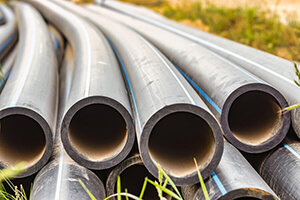When static charges accumulate in a polymer, it can lead to problems during the processing of the polymer. For instance, during transport, storage and packaging, there is the risk of dust pollution (which can harm the visual appearance of the final product and its performance), a risk of electric shocks to workers when working with machinery.
An antistatic masterbatch can be added to plastic before or during the processing to provide antistatic properties. Therefore, this product prevents dust accumulation on plastic products by generating antistatic properties. It migrates continuously to the surface of many polymers, so even if it is removed regularly, it may accumulate. It is also necessary to pay attention to their interactions with other additives, such as lubricants, thermal stabilizers, etc.
Types of antistatic additives
Additives are grouped into internal and external based on their application, and anionic, cationic, and non-ionic based on their chemistry. The internal antioxidant additive is usually used in the amount of 0.1-3% by weight and has little compatibility with polymers.
However, its molecule possesses a hydrophilic head, which forces it to migrate to the surface and absorb moisture from the environment, thereby increasing the conductivity of the surface as a result. It is easy to use these additives and they are used at a minimum. Another advantage of antistatic additives is that they improve the processability of molds and make them easier to remove. The use of external antistatic additives is the same as the use of internal antistatic additives. As a difference, they are used in the form of aqueous or alcoholic base solutions which can be sprayed or dipped onto the surface of the final product. This group of antistatic additives has a fast effect. One of the most commonly used cationic antistatics is the sodium salt of alkylammonium. Alkylamines have long chains that have high compatibility with polymers and are therefore commonly used. they are mostly used in PVC products and their high heat sensitivity.
Some common antistatic agents include glycerol stearate, acid esters, and ethoxylated amines. As a result, they create a conductive path to repel static charges by migrating to the surface, absorbing moisture and air ions, and creating a conductive way. An anionic antistatic agent is usually an alkyl sulfonic alkali salt and sometimes a phosphonic or carboxylic acid; sodium alkyl sulfonate is suitable for styrene plastic. This group’s most important type of antistatic agent is the nonionic antistatic agent. They consist of alkyl amines or ethoxylated amides, fatty acid esters, polyol ether, and esters. Ethoxylated amines (EA) and glycerol monostearate (GMS) make up more than half of the classical antistatic market. They are mostly used in polyolefins and styrene. The amides in these additives overcome EA’s corrosivity, which can damage packaged goods when it is used as an antistatic additive.
Application of Antistatic masterbatch

Buy Antistatic Masterbatch
Contact our experts to get a daily price for antistatic masterbatch. Before buying antistatic masterbatch, you can also consult our experts.








